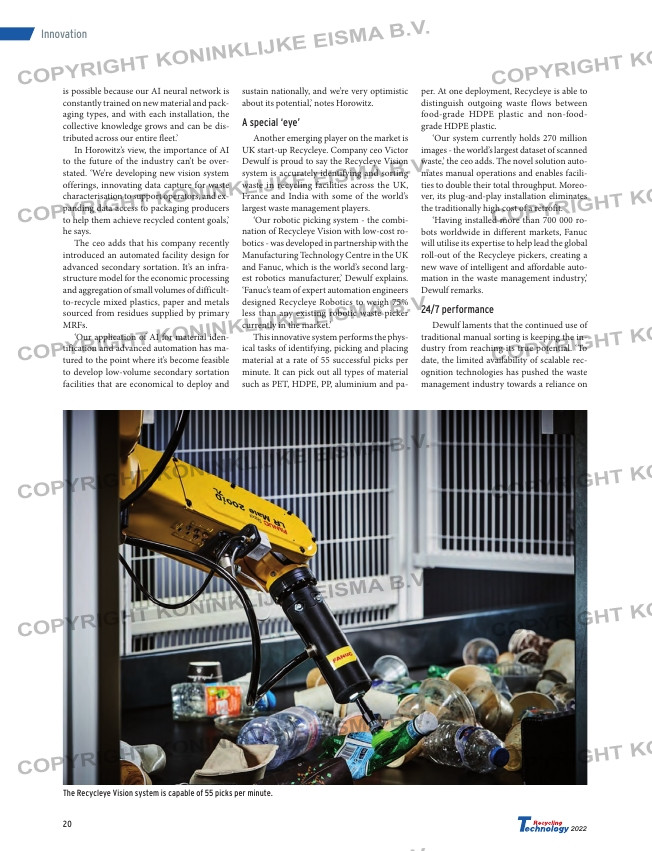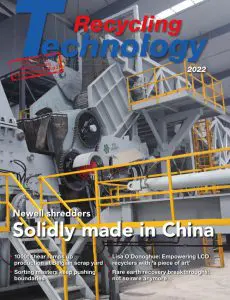Page 20 from: Recycling Technology issue | 2022

20
2022
Innovation
is possible because our AI neural network is
constantly trained on new material and pack-
aging types, and with each installation, the
collective knowledge grows and can be dis-
tributed across our entire fleet.’
In Horowitz’s view, the importance of AI
to the future of the industry can’t be over-
stated. ‘We’re developing new vision system
offerings, innovating data capture for waste
characterisation to support operators, and ex-
panding data access to packaging producers
to help them achieve recycled content goals,’
he says.
The ceo adds that his company recently
introduced an automated facility design for
advanced secondary sortation. It’s an infra-
structure model for the economic processing
and aggregation of small volumes of difficult-
to-recycle mixed plastics, paper and metals
sourced from residues supplied by primary
MRFs.
‘Our application of AI for material iden-
tification and advanced automation has ma-
tured to the point where it’s become feasible
to develop low-volume secondary sortation
facilities that are economical to deploy and
sustain nationally, and we’re very optimistic
about its potential,’ notes Horowitz.
A special ‘eye’
Another emerging player on the market is
UK start-up Recycleye. Company ceo Victor
Dewulf is proud to say the Recycleye Vision
system is accurately identifying and sorting
waste in recycling facilities across the UK,
France and India with some of the world’s
largest waste management players.
‘Our robotic picking system – the combi-
nation of Recycleye Vision with low-cost ro-
botics – was developed in partnership with the
Manufacturing Technology Centre in the UK
and Fanuc, which is the world’s second larg-
est robotics manufacturer,’ Dewulf explains.
‘Fanuc’s team of expert automation engineers
designed Recycleye Robotics to weigh 75%
less than any existing robotic waste picker
currently in the market.’
This innovative system performs the phys-
ical tasks of identifying, picking and placing
material at a rate of 55 successful picks per
minute. It can pick out all types of material
such as PET, HDPE, PP, aluminium and pa-
per. At one deployment, Recycleye is able to
distinguish outgoing waste flows between
food-grade HDPE plastic and non-food-
grade HDPE plastic.
‘Our system currently holds 270 million
images – the world’s largest dataset of scanned
waste,’ the ceo adds. The novel solution auto-
mates manual operations and enables facili-
ties to double their total throughput. Moreo-
ver, its plug-and-play installation eliminates
the traditionally high cost of a retrofit.
‘Having installed more than 700 000 ro-
bots worldwide in different markets, Fanuc
will utilise its expertise to help lead the global
roll-out of the Recycleye pickers, creating a
new wave of intelligent and affordable auto-
mation in the waste management industry,’
Dewulf remarks.
24/7 performance
Dewulf laments that the continued use of
traditional manual sorting is keeping the in-
dustry from reaching its true potential. ‘To
date, the limited availability of scalable rec-
ognition technologies has pushed the waste
management industry towards a reliance on
The Recycleye Vision system is capable of 55 picks per minute.
18-19-20-21_smartsorting.indd 20 31-08-21 15:56



